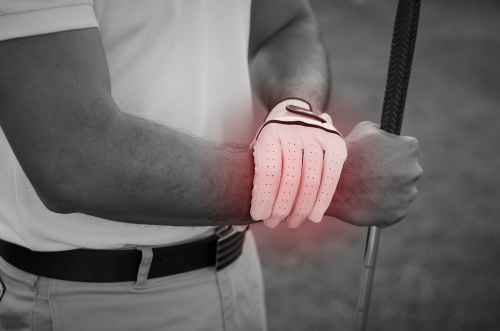Which is better for DeQuervain’s: Splinting or Injection?
Filed under Reviews
Rapid Review
Cavaleri, R., Schabrun, S. M., Te, M., & Chipchase, L. S. (2016). Hand therapy versus corticosteroid injections in de Quervain’s disease treatment: A systematic review and meta-analysis. Journal of hand therapy: official journal of the American Society of Hand Therapists, 29(1), 3–11. https://doi.org/10.1016/j.jht.2015.10.004
The Skinny: DeQuervain’s Tenosynovitis is a stenosing tenosynovial inflammation affecting the abductor pollicis longus and the extensor pollicis brevis in the 1st dorsal compartment. The treatment varies from conservative the surgical, and this review focuses on conservative treatment.

The authors performed a systematic review to compare the effectiveness of steroid injections with 1.) hand therapy splinting alone, 2.) hand therapy splinting with steroid injections, and 3.) steroid alone in treating DeQuervain’s.
In the Weeds: A total of 6 articles were included in the review, which included 334 patients. The mean age of patients was between 27 and 44 years. Three studies compared steroid injections with splinting, and three compared splinting with injections alone. No studies were included that looked at other forms of therapy such as physical agent modalities, exercise, and manual therapy. The time the splint was worn was not specified in the studies.
Bringing It Home: Both groups, including the corticosteroid injection and splinting group, improved overall function and decreased pain. More patients were treated successfully when combined splinting and steroid injection were used together.
Rating: 4/5 The study’s limitations include the lack of specification on the type of splint used and the specific regime. The outcomes measures did not look at the quality of life; instead, they focused on treatment success rate and pain relief. Research into different treatment regimes is needed to make sound recommendations for splinting duration.
1 Comment
Leave a Comment
More To Read
Hand Therapy Marketing 101
Marketing 101 – 5 Tips for Your Therapy Clinic Confession: I hate marketing. It’s my least favorite part of my job. It is so hard to open yourself up to that much rejection but still stay positive. It feels like the professional version of blind dating, except the other person probably already has a significant…
Read MoreTrigger Finger… Quick and Dirty!
This is for you… Hand Therapists! Stenosing tenosynovitis, otherwise known as trigger finger, is a common condition affecting children and adults of all ages. Fast Facts Trigger finger usually occurs at the A1 pulley It occurs with inflammation of the tendons and sheaths of fds and fdp The digit can lock in both flexion and…
Read MoreHand Therapy Interventions for Distal Upper Extremity Injuries and Conditions
Takata, S.C., Wade, E.T., & Roll, S.C. (2019). Hand therapy interventions, outcomes, and diagnoses evaluated over the last 10 years: A mapping review linking research to practice. Journal of Hand Therapy, 32(1), 1–9. Written by Brittany Carrie The Skinny Approximately 26.9% of orthopedic injuries and disorders of the upper extremity occur worldwide. Injuries are most…
Read MoreCovid-19: What is your clinic doing?
It’s what every patient is talking about when they come in? With the suspension of every major sport, international travel banned, and hospital quarantines, everyone wants to know what their own therapists are doing to address the problem. I’m a small business owner and therapist. That means I really have 3 priorities. 1: Protect my…
Read MoreSign-up to Get Updates Straight to Your Inbox!
Sign up with us and we will send you regular blog posts on everything hand therapy, notices every time we upload new videos and tutorials, along with handout, protocols, and other useful information.







Great way of spreading many studies into a short outcome.